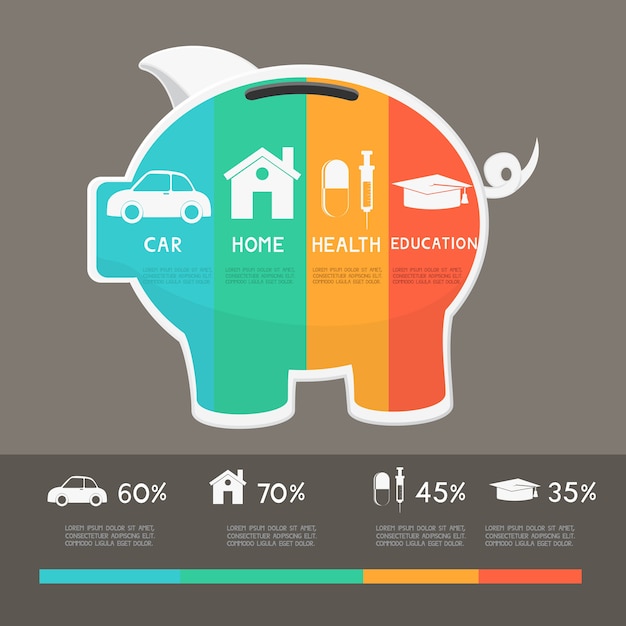Dependent Care FSA: Your 2025 Financial Lifeline for Childcare

Dependent Care FSA in 2025 offers working parents a tax-advantaged way to pay for eligible childcare expenses, providing significant financial relief and enabling them to balance work and family responsibilities more effectively.
Navigating the world of childcare costs can be overwhelming for working parents. Fortunately, the Dependent Care FSA (Flexible Spending Account) offers a financial lifeline in 2025, allowing you to set aside pre-tax dollars to cover eligible dependent care expenses. This benefit can significantly reduce your overall childcare costs and ease your financial burden.
Understanding the Basics of a Dependent Care FSA
A Dependent Care FSA is a pre-tax benefit account used to pay for eligible dependent care services, such as childcare, for children under age 13 or other qualifying dependents. This allows working parents to set aside money before taxes are taken out of their paycheck, resulting in a lower taxable income and potential tax savings.
Essentially, it’s a way to pay for childcare with “pre-tax” money, meaning you don’t pay income taxes on the money you contribute to the FSA. This can lead to substantial savings over the course of a year.
Who is Eligible for a Dependent Care FSA?
To be eligible for a Dependent Care FSA, you (and your spouse, if married) must be working or attending school full-time. In addition, your dependent must be either under the age of 13 or incapable of self-care and living in your household for more than half the year.
What Expenses Qualify?
Eligible expenses typically include daycare, preschool, before- and after-school care, and summer day camps. The key is that the care must be necessary to allow you (and your spouse, if married) to work or attend school.

To wrap up, A Dependent Care FSA provides a valuable way for working parents to save money on childcare expenses by using pre-tax dollars, lowering their income taxes.
Contribution Limits and Tax Advantages in 2025
Understanding the contribution limits and significant tax benefits of a Dependent Care FSA in 2025 is crucial for maximizing its value. Staying within the contribution limits helps to ensure you receive the full tax advantages, and understanding these benefits can help you see how much money you could save.
The IRS sets annual limits on how much you can contribute to a Dependent Care FSA. These limits are designed to ensure that the program benefits those who genuinely need assistance with dependent care costs.
- Contribution Limits: For 2025, the maximum amount you can contribute to a Dependent Care FSA is generally $5,000 per household if you are married filing jointly or as a single individual. If you are married filing separately, the limit is typically $2,500.
- Tax Advantages: The primary advantage of a Dependent Care FSA is the tax savings. Because your contributions are made pre-tax, they reduce your taxable income. This means you’ll pay less in federal income taxes, Social Security taxes, and Medicare taxes.
- “Use-it-or-Lose-it” Rule: It’s important to remember the “use-it-or-lose-it” rule associated with Dependent Care FSAs. Any money you contribute that isn’t used by the end of the plan year is typically forfeited.
In conclusion, staying informed of the contribution limits and fully utilizing the tax advantages are key to maximizing the Dependent Care FSA’s value.
How to Enroll in a Dependent Care FSA
Enrolling in a Dependent Care FSA is typically a straightforward process, often handled through your employer’s benefits program. Awareness and a little proactive action will put you on the path the financial relief.
Here’s a step-by-step guide on how to enroll:
- Check Eligibility: Before enrolling, confirm that you meet the eligibility requirements. Generally, you’ll need to be employed and have qualifying dependents for whom you incur care expenses.
- Enroll During Open Enrollment: Most employers offer enrollment in a Dependent Care FSA during their annual open enrollment period. This is usually the time when you can elect your benefits for the upcoming year.
- Estimate Your Expenses: Carefully estimate your anticipated dependent care expenses for the upcoming year. This will help you determine how much to contribute to your FSA. Remember, you’ll want to avoid overestimating to minimize the risk of forfeiting unused funds.
- Complete Enrollment Forms: Fill out the necessary enrollment forms provided by your employer or benefits administrator. You’ll typically need to provide information about yourself, your dependents, and your desired contribution amount.
In summary, by checking your eligibility, enrolling during the specified time, estimating your expenses and completing the forms, you will enroll into a Dependent Care FSA and gain access to it’s benefits.
Maximizing Your Dependent Care FSA Benefits
Successfully using a Dependent Care FSA involves careful planning and record-keeping. By maximizing strategic payments, one ensures that every dollar contributed goes towards eligible expenses. This helps you avoid forfeiting unused funds and optimizes the tax benefits.
Here’s how to make the most of your Dependent Care FSA:
Plan Ahead
Estimate your dependent care expenses for the year as accurately as possible. Consider all eligible costs, such as daycare, preschool, and after-school programs. Avoid overestimating to prevent losing unused funds at the end of the year.
Submit Claims Promptly
Most Dependent Care FSAs require you to submit claims with documentation to verify your expenses. This might include invoices or receipts from your childcare provider. Submitting claims promptly ensures you receive reimbursements in a timely manner and helps you track your spending throughout the year.

Keep Detailed Records
Maintain detailed records of all dependent care expenses, including dates of service, amounts paid, and the provider’s name and address. This documentation is essential for submitting claims and verifying your expenses.
In conclusion, you ensure benefits are used effectively, records are detailed, and claims are timely.
Common Mistakes to Avoid with a Dependent Care FSA
Navigating a Dependent Care FSA can be tricky, with several common pitfalls to avoid. A clear understanding of the program will help you prevent easily avoidable errors.
Some common mistakes include:
- Overestimating Expenses: One of the biggest mistakes is overestimating your dependent care expenses. Remember the “use-it-or-lose-it” rule, and only contribute what you realistically expect to spend.
- Missing the Deadline: Be aware of deadlines for submitting claims and using your FSA funds. Missing these deadlines can result in forfeiting unused funds.
- Not Keeping Adequate Records: Failing to keep detailed records of your dependent care expenses can make it difficult to submit claims and receive reimbursements. Always retain receipts and invoices.
- Assuming All Expenses Qualify: Not all dependent care expenses are eligible for reimbursement. Make sure you understand which expenses qualify under your FSA plan. For example, overnight camps and certain educational expenses might not be eligible.
In conclusion, be prepared to avoid the common pitfalls of Dependent Care FSA, ensuring you fully use your benefits.
Dependent Care FSA vs. Child and Dependent Care Tax Credit
Working parents often have access to various tax benefits related to childcare expenses. Two of the most prominent are the Dependent Care FSA and the Child and Dependent Care Tax Credit. While both aim to reduce the financial burden of childcare, they operate differently and offer unique advantages.
A Dependent Care FSA is a pre-tax benefit account offered through employers, allowing you to set aside money for eligible dependent care expenses before taxes are deducted from your paycheck. The Child and Dependent Care Tax Credit, on the other hand, is a tax credit you can claim on your federal income tax return for qualifying childcare expenses.
Key Differences
One key difference is that a Dependent Care FSA reduces your taxable income, while the Child and Dependent Care Tax Credit directly reduces the amount of tax you owe. Additionally, the FSA is funded with pre-tax dollars, while the tax credit is claimed after you’ve already paid for the expenses.
Can You Use Both?
It’s possible to use both a Dependent Care FSA and the Child and Dependent Care Tax Credit, but you can’t “double dip.” The amount of expenses you can claim for the tax credit is reduced by the amount you contribute to your FSA.
In summary, even though both aims to ease the strain of childcare expenses, it is important to be aware of the differences to maximize savings.
| Key Point | Brief Description |
|---|---|
| 💰 Contribution Limits | Maximum of $5,000 per household, $2,500 if married filing separately. |
| ✅ Eligible Expenses | Daycare, preschool, before/after-school care, summer day camps. |
| 📅 Enrollment Period | Typically during annual open enrollment with your employer. |
| ❗ Use-it-or-Lose-it Rule | Unused funds are typically forfeited at the end of the plan year. |
Frequently Asked Questions
▼
A Dependent Care FSA is a pre-tax benefit account that allows working parents to set aside money to pay for eligible dependent care expenses, such as daycare, preschool, and before- and after-school programs.
▼
To be eligible, you must be working or attending school full-time, and your dependent must be either under age 13 or incapable of self-care. The care must enable you to work or attend school.
▼
Eligible expenses include daycare, preschool, before- and after-school care, and summer day camps. The care must be necessary to allow you (and your spouse, if married) to work or attend school.
▼
For 2025, the maximum contribution limit is generally $5,000 per household if married filing jointly or as a single individual. If married filing separately, the limit is typically $2,500.
▼
Dependent Care FSAs typically follow the “use-it-or-lose-it” rule. Any money you contribute that isn’t used by the end of the plan year is usually forfeited, so plan your contributions carefully.
Conclusion
The Dependent Care FSA is a valuable tool for working parents in 2025 seeking to alleviate the financial strain of childcare expenses. By understanding the benefits, contribution limits, and eligible expenses, you can effectively leverage this program to reduce your taxable income and save money, making quality care more accessible for your family.





